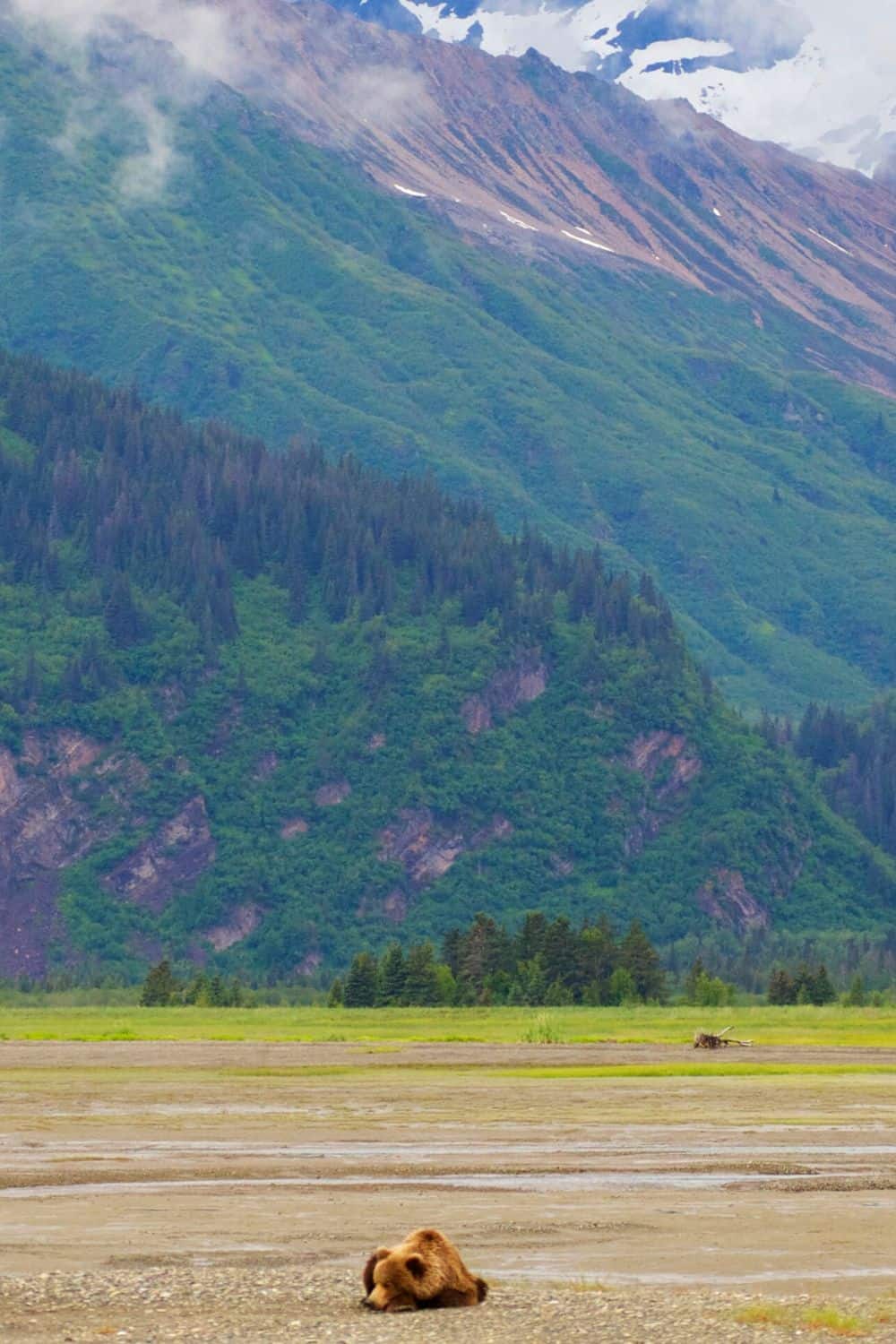
Katmai National Park is located in the southern region of Alaska and is known for its vast wilderness and diverse range of wildlife. The park spans over 4 million acres and is home to some of the most unique flora and fauna in the world. The park is named after Mount Katmai, which is a stratovolcano that last erupted in 1912, and the park is known for its abundant wildlife, including grizzly bears, wolves, and salmon. In this article, we will discuss the flora and fauna in Katmai National Park in detail.
Flora
Katmai National Park is located in a region that experiences a subarctic climate, which means that the vegetation in the park is primarily composed of coniferous trees such as spruce and hemlock. The park also has areas of tundra, which is characterized by low-growing vegetation and permafrost soil.
The most common tree species found in Katmai National Park is the Sitka spruce (Picea sitchensis), which can grow up to 70 meters tall and has a lifespan of up to 700 years. Other tree species found in the park include western hemlock (Tsuga heterophylla), Alaska yellow cedar (Callitropsis nootkatensis), and Pacific yew (Taxus brevifolia). The underbrush in the park is composed of a variety of shrubs such as alder (Alnus spp.), blueberry (Vaccinium spp.), and willow (Salix spp.).
The tundra areas of Katmai National Park are characterized by low-growing vegetation such as mosses, lichens, and sedges. The tundra is also home to a variety of wildflowers such as lupine (Lupinus spp.), fireweed (Chamerion angustifolium), and arctic poppy (Papaver radicatum).
Fauna
Katmai National Park is known for its abundant wildlife, which includes both marine and terrestrial species. The park is particularly well-known for its population of grizzly bears (Ursus arctos horribilis), which are often spotted along the Brooks River and in other areas of the park during the salmon spawning season. The park also has a population of black bears (Ursus americanus), which are typically found in the forested areas of the park.
The park is also home to a variety of marine mammals such as sea otters (Enhydra lutris), harbor seals (Phoca vitulina), and Steller sea lions (Eumetopias jubatus). These marine mammals can often be seen swimming in the waters surrounding the park.
In addition to the bears and marine mammals, Katmai National Park is also home to a variety of other terrestrial species such as wolves (Canis lupus), moose (Alces alces), and caribou (Rangifer tarandus). The park also has a population of arctic foxes (Vulpes lagopus), which are adapted to survive in the harsh subarctic climate of the park.
Birds are also abundant in Katmai National Park, with over 200 species having been recorded within the park boundaries. Some of the most commonly seen bird species in the park include bald eagles (Haliaeetus leucocephalus), common loons (Gavia immer), and sandhill cranes (Antigone canadensis).
Conclusion
Katmai National Park is a unique and diverse ecosystem that is home to a wide variety of flora and fauna. The park’s subarctic climate and vast wilderness make it an ideal habitat for a variety of species, including grizzly bears, marine mammals, and a variety of bird species.
Katmai National Park and Preserve is located in southern Alaska and experiences a subarctic climate. Here are some general weather patterns and conditions in the park:
- Winter: Winters in Katmai are long and cold, with temperatures often dropping below freezing. The park is usually covered in snow, and the days are short with only a few hours of daylight.
- Spring: Spring is brief in Katmai, with temperatures starting to warm up in April and May. However, snow can linger into June, and spring weather can be unpredictable.
- Summer: Summer in Katmai is short but beautiful, with temperatures ranging from the 50s to the 70s Fahrenheit. The days are long, with nearly 18-20 hours of daylight in June and July. However, rain and thunderstorms can occur during the summer months.
- Fall: Fall is a beautiful time to visit Katmai, with changing foliage and cooler temperatures. However, the weather can be unpredictable, and snow can arrive as early as September.
It’s important to be prepared for changing weather conditions when visiting Katmai. Bring warm, waterproof clothing, layers, and sturdy footwear. Check the weather forecast before your trip and be prepared for sudden changes in weather. Additionally, the park’s coastal areas can be windy and rainy, so be prepared for those conditions as well.
Related posts:
Katmai National Park is located in southern Alaska and is home to one of the largest concentrations of brown bears in the world. These bears are a major draw for visitors to the park, as they offer a rare opportunity to observe these ...
Brown bears, also known as grizzly bears, are one of the largest and most majestic land mammals in the world. Found throughout North America, Europe, and Asia, these powerful animals are known for their size, strength, and ferocity. I...
Katmai National Park is a breathtaking wilderness destination located in southwestern Alaska. The park is known for its stunning natural beauty, rugged wilderness, and abundant wildlife, making it a popular destination for outdoor enthusias...
Katmai National Park is a vast wilderness area located in southwestern Alaska, United States. It covers an area of 4,093,077 acres and was established in 1980 to protect the natural and cultural resources of the region. The park is known for its ...